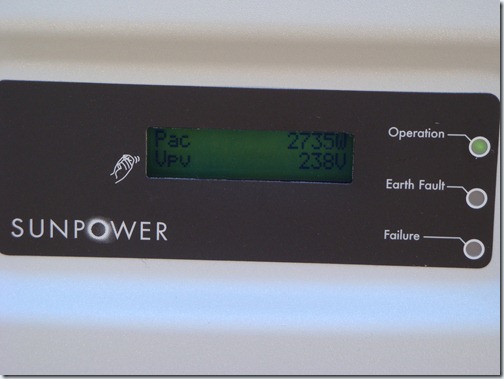After getting my new grid-tied solar PV system turned on and operational on June 18, 2010, I have become temporarily obsessed with going outside and looking at the LCD display on my SunPower 3000m inverter to see how much power is being generated by the system. Since January 2010, I have had a TED 5000 device installed, which measures the electrical consumption for my entire house on a second by second basis. Being aware of your consumption in real-time has a huge effect on your behavior, and typically results in a significant reduction in your usage.
The problem that I am dealing with right now is that the inductive pickups that the standard TED 5000-C device uses cannot tell which way the current is flowing. The baseline electrical usage for my entire house is in the 200-300 watt range, depending on whether the compressor for the refrigerator is running and what else is turned on in the house. This means that I can generate 2400-2500 watts of excess electricity that flows back into the local electrical grid. Unfortunately, the standard TED 5000-C device only measures the net current flow, regardless of the direction, so it indicates that I am using 2500 watts when I am actually generating a net of 2500 watts.
Below, you can see where it was generating 2735 watts at about 1PM on June 10. This is pretty close to the highest output I have seen so far. The output of the panels is affected by clouds, the time of day, and the day of the year. A large cloud that blocks the Sun has a huge effect on the output of the panels. The sun is higher in the sky during the middle of the day, which causes the sunlight to strike the panels at a better angle. During the summer months, the sun is higher in the sky throughout the day due to the tilt of the Earth, and the day is longer. All of these factors affect your total electrical production. My system is estimated to produce a monthly average of 378 kwH, with production being higher in the summer months, and lower in the winter months.
This is why I am making so many visits to look at the inverter to see the current output, compared to what the TED 5000 claims. I look at the TED 5000 display, consider the time of day, and the cloud cover, and then try to guess the output of the solar PV array. This is very similar (in my mind) to becoming very familiar with the workload on a database server and collecting baseline performance metrics that you can compare with. It is certainly entertaining for my two miniature Dachshunds, who always follow me outside!



